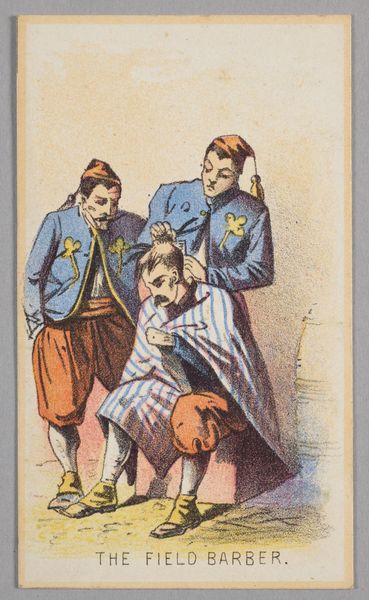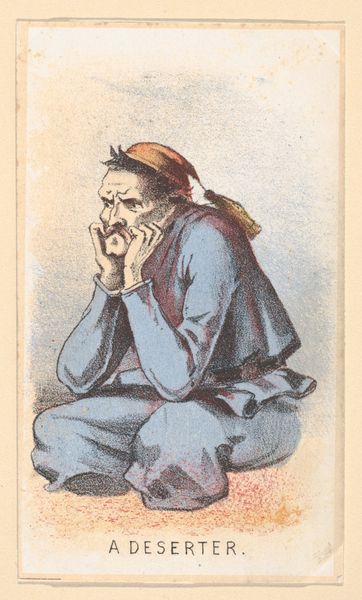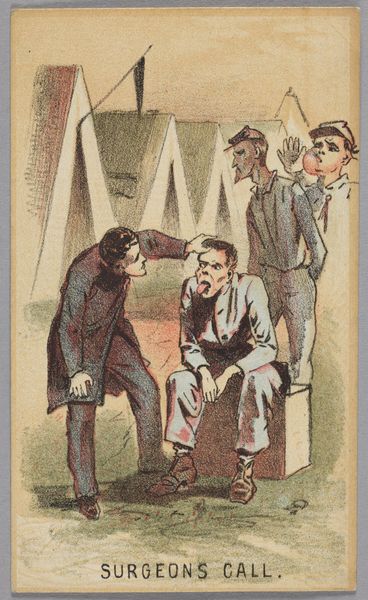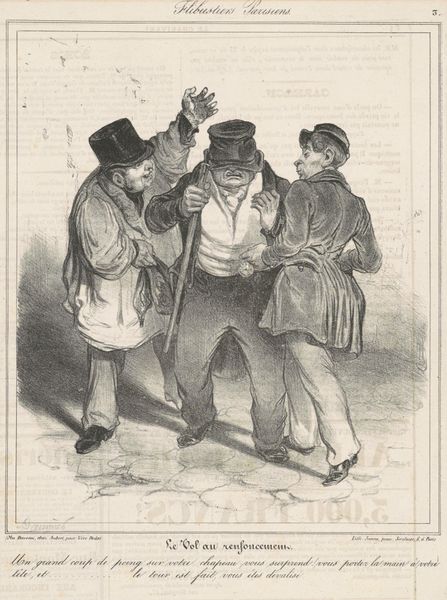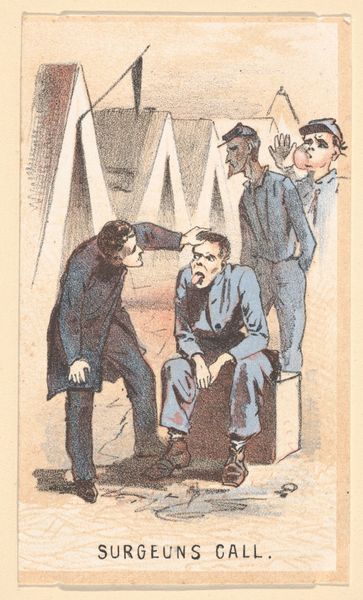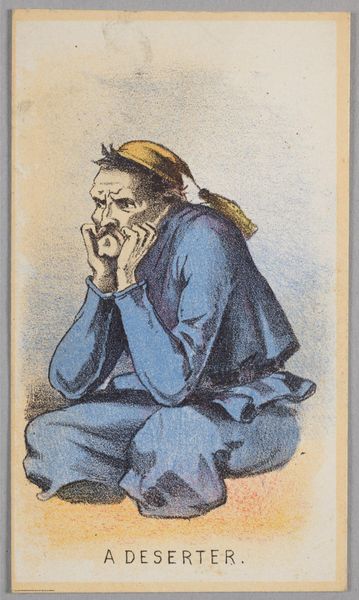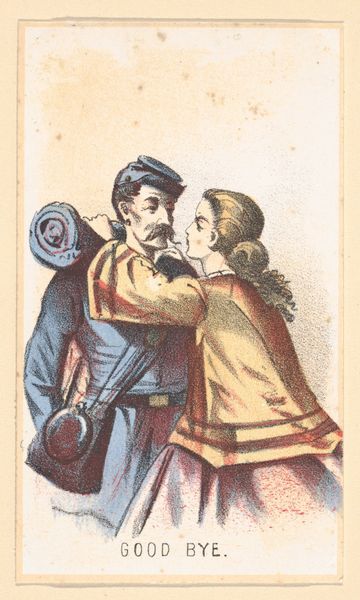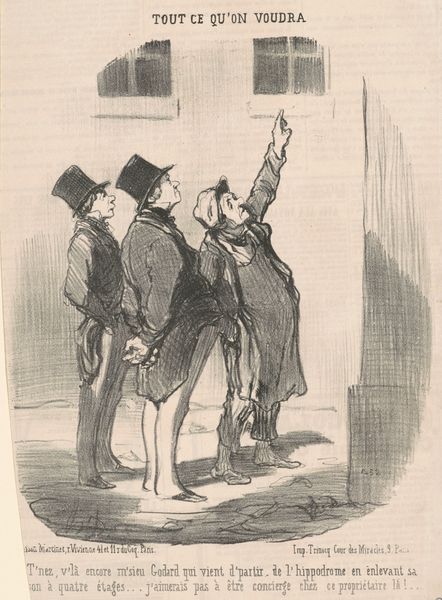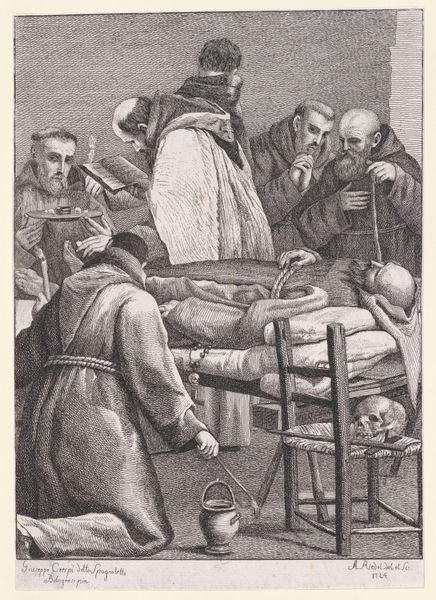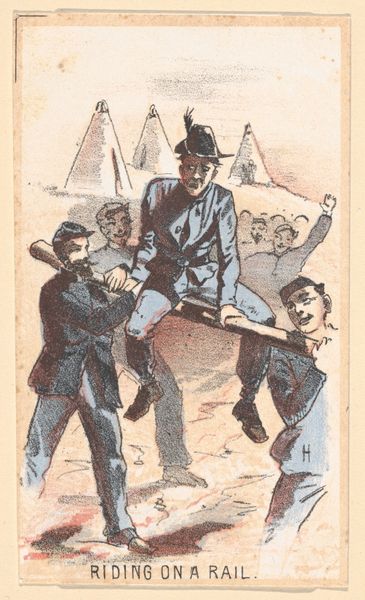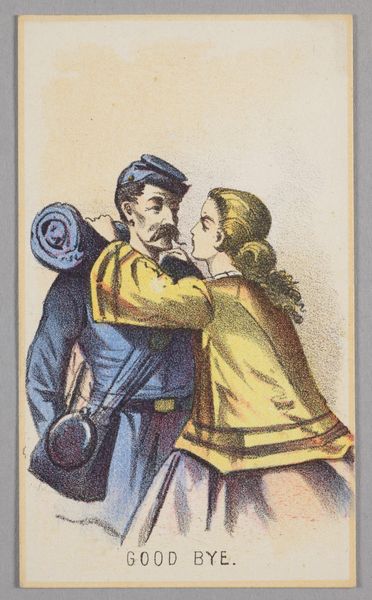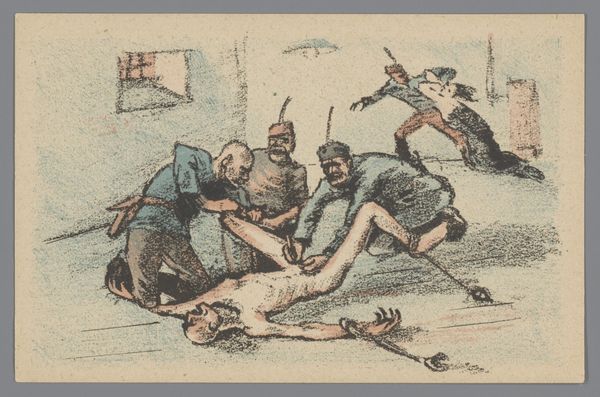
drawing, coloured-pencil, print, watercolor
#
drawing
#
coloured-pencil
#
narrative-art
# print
#
caricature
#
war
#
caricature
#
watercolor
#
coloured pencil
#
soldier
#
men
#
watercolour illustration
#
genre-painting
#
academic-art
Dimensions: Sheet: 4 1/8 x 2 3/8 in. (10.4 x 6.1 cm)
Copyright: Public Domain
Curator: Ah, here we have Winslow Homer's "Life in Camp, Part 2: The Field Barber," created in 1864 during the American Civil War. It’s a watercolor and colored pencil drawing, a genre scene rendered with his characteristic directness. Editor: It’s kind of… humorous, but with an underlying current of weariness, I think. The barber’s expression is very serious. And his clients' demeanor is not quite suggesting leisure. There is some melancholy in their expression. Curator: I agree, there’s a poignant quality to it. It's part of a series exploring everyday life for soldiers, offering a contrast to the grand battle scenes. The Civil War era saw many artist try to communicate a social commentary with images from every day occurrences to reach more people. Editor: The composition is interesting too. The barber’s central, and slightly elevated position gives him an authority over the rest of the soldiers. The man being served has an attitude of a man from that upper class but the context contrasts him greatly. Curator: Exactly. The placement emphasizes a stark truth of military life. The officers' presence feels more dominant than it should as the piece wants to be from the life perspective of the people under the lead. Winslow also made prints from his Civil War drawings and many of them reached broad audiences thanks to magazines. Editor: The somewhat cartoonish style reminds me that images also carry political meaning with caricature. Maybe this cartoon-style was perceived as innocent to reach a larger and politically varied public? Curator: Precisely. Homer walked a tightrope, observing and recording while subtly critiquing. Images were key for solidifying public opinion during the war. This illustration served both sides by uniting them on basic social elements while they were tearing apart on ideological principles. Editor: Looking at the uniforms now... they seem deliberately presented in some detail. Curator: The meticulous depiction serves the same narrative purposes. While we may not have much on the soldiers from the original army registry, we do now, and because Winslow registered it at the time. What a way of keeping individual identity afloat in such large structures of command? Editor: Well, I see this in a totally new light now, quite clever actually! Thanks for that. Curator: It's what the piece asks of us, that attention. Always a pleasure.
Comments
No comments
Be the first to comment and join the conversation on the ultimate creative platform.
